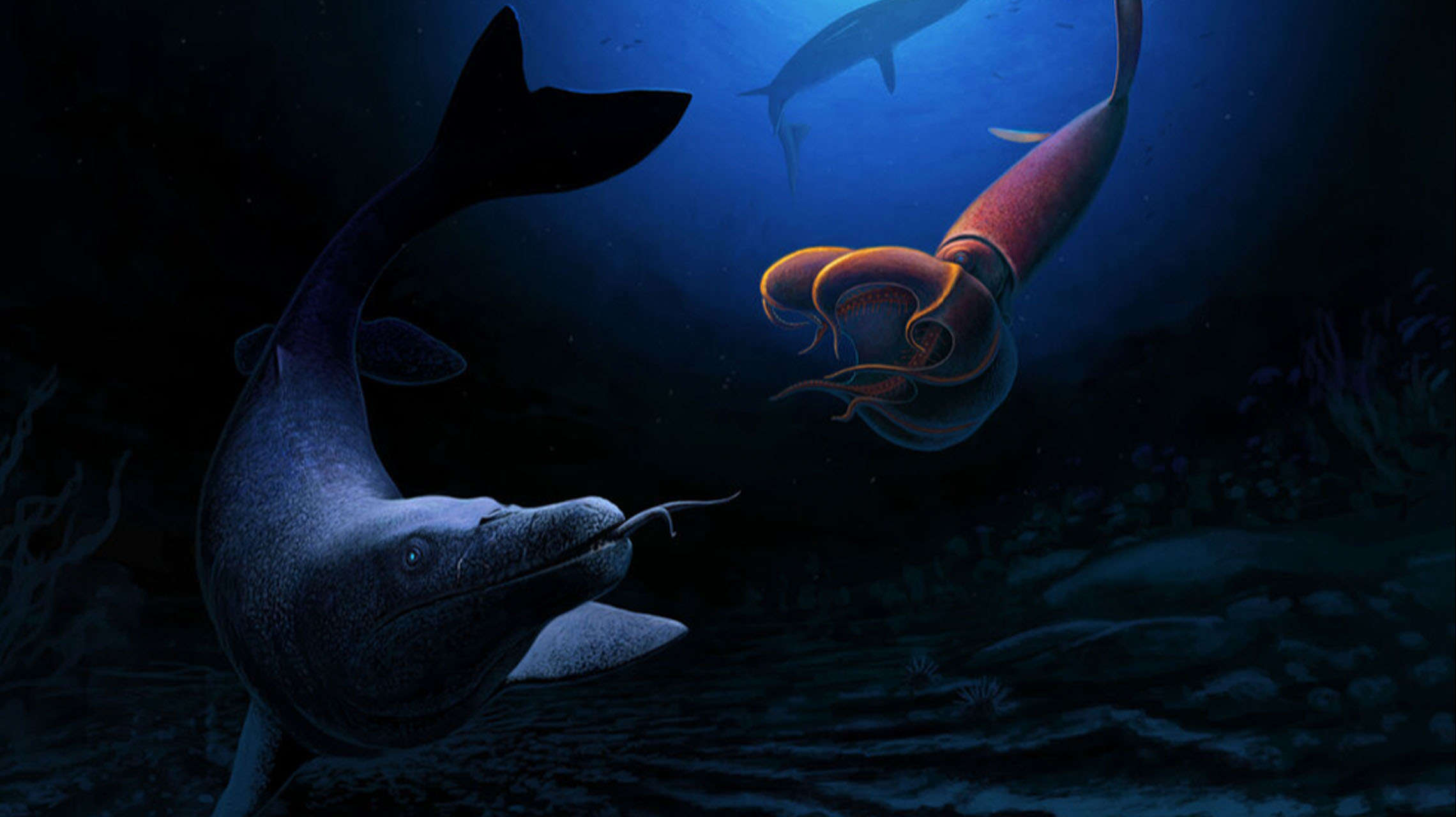Create a free profile to get unlimited access to exclusive videos, sweepstakes, and more!
Snakelike prehistoric sea monster was the real-life Basilisk from Harry Potter

When Tom Riddle called Salazar Slytherin’s Basilisk from the Chamber of Secrets in the bowels of Hogwarts, the beast was too eager to devour the humans right in front of it, but it only lives in the realm of fiction. This sea serpent was real.
Pluridens serpentis was a snakelike mosasaur that is thought to have hunted much like a snake. More mosasaurs have been found in Morocco than anywhere else on the planet. New research has now shown that they were diversifying more than ever right before the asteroid of doom crashed down. Muggles like us now believe there could have been more actual species of mosasaurs than we ever imagined, and the newly discovered species proves that even living underwater couldn’t take the reptile out of a dinosaur.
Adding to the list of what are now 40 known species of mosasaurs, P. serpentis (whose name definitely sounds like a dark spell) is the third new species to surface from what is now Moroccco in less than a year. Paleontologist and mosasaur enthusiast Nick Longrich of the University of Bath discovered something less like a dolphin or shark and more similar to the mascot of Slytherin.
“Mosasaurs were wiped out just as they were starting to hit their stride,” Longrich, who led a study recently published in Cretaceous Research, told SYFY WIRE in an interview. “They took off after the mid-Cretaceous mass extinction, radiating to take advantage of all the empty niches left by icthyosaurs. The whole ecosystem slowly recovered for the next 25 million years, producing species, doing weird things—more mosasaurs, more different things for them to eat, so even more mosasaurs.”
Mosasaurs didn’t exactly know there was an asteroid coming for them and all the other monster lizards that dominated the late Cretaceous. Fauna around 66 million years ago was so diverse because it had time on its side. Proto-mosasaurs that weren’t nearly as fearsome as their successors first stalked prehistoric waters around 100 million years ago. They began to grow to sizes closer to that of the Basilisk around 94 million years ago, with different species evolving flippers, tails and other features based on where they lived and what there was to eat. They found their chance to take over the seas after the last ichthyosaur perished.
How it hunted is most likely what made P. Serpentis into such a snake. Its beady eyes could hardly see anything, so it couldn’t have been a visual hunter, but it made up for that. Longrich found many nerve openings in its fossilized snout. This probably means that its sense of touch and taste were amplified, allowing it to hunt by sensing movements and possibly flicking its tongue to taste the water, much like snakes sense prey through movement and smell. It also flashed some killer fangs that snapped up fish and squid. Sorry to disappoint any Slytherins out there*, but this Basilisk wasn’t venomous.
Longrich believes the size of this creatures also gives away that they hunted differently than some of their brethren. They could grow up to about 27 feet, and things could get ugly if two of them started fighting over prey or mates or territory, as healing wounds in their skulls prove.
“We found these huge lumps and craters in the jaw, a sort of gnarly bone, while a healthy bone just has a smooth, well-formed surface,” he said. “You see similar things in lizards and crocodiles, or even dinosaurs that got in a fight and suffered bone injuries that had to heal. After seeing a lot of healthy bones, you learn to see when one just looks wrong.”
When you find three new species in the middle of a pandemic, you know you have to be on to something, which is why the researchers will continue to dig through the dried-up paleo-seas of Morocco to see just how many species they can find. Not all of them coexisted, so fossils of species that swam into and out of existence at different times may be buried close to one another. The incredible diversity of mosasaur fossils in Morocco is another example of higher diversity of species at lower latitudes. Think of how many frogs and lizards and insects must have still gone undiscovered in rainforests of Brazil and Madagascar.
“With these fossils, Pluridens went from an obscure and poorly known species to one of the better known mosasaurs,” Longrich said. “So I think rather than spend more time on Pluridens, we want to now look at everything else in the fauna—and there’s a lot.
It might have been an almost fantastical serpent, but whether or not Pluridens Serpentis would answer to Parseltongue remains unknown.
*Your friendly neighborhood author identifies as a Ravenclaw.



























